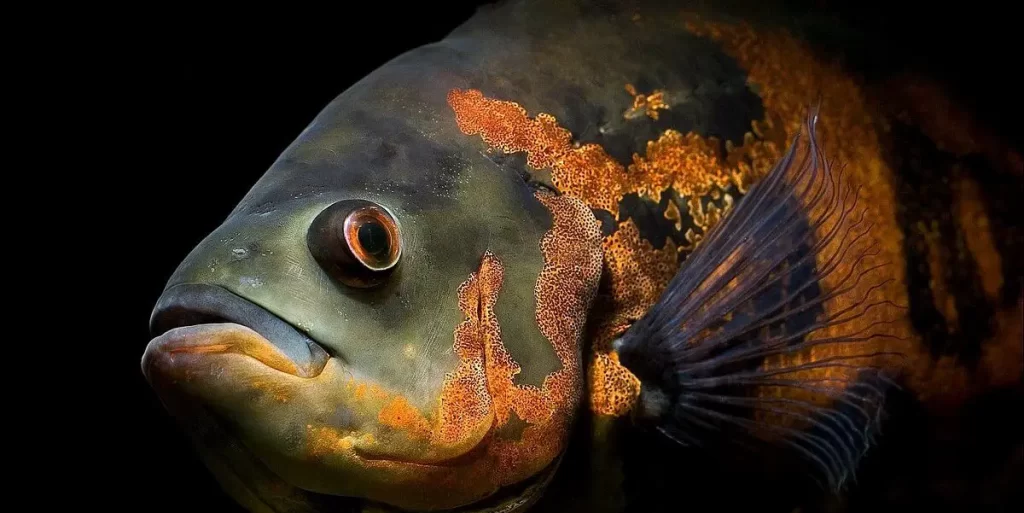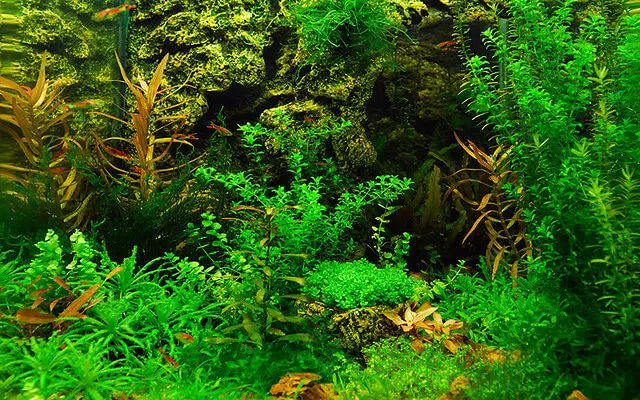Setting up a fish tank for beginners can be an exciting and easy process. However, it’s important to consider the tank type and gather essential equipment according to your preferred fish species.
Quick Answer:
For beginners, creating the ideal tank is a simple process. Begin with a moderately sized tank, around 10-20 gallons, and choose gravel or sand for the substrate. Install a suitable filter and, if necessary, a heater for tropical fish. Add natural elements like rocks, driftwood, and plants for a stimulating environment. Before adding fish, cycle the tank to establish a healthy ecosystem. Select easy-to-care-for fish and maintain water quality through regular testing.
In this simple guide, we’ll take you through the essential steps to set up a fish tank where your fish will love and live. Whether you’re interested in creating a beautiful underwater habitat or want to enjoy the soothing presence of aquatic life, this simple guide is here to help you get started.
Required Equipment For Fish Tank Set-Up
Setting up a fish tank requires a few important equipment and materials to ensure a successful and hassle-free experience. Let’s go through the checklist together to make sure you have everything you need for a proper fish tank setup:
1. Fish Tank
First, you’ll need a tank for your fish to live in. It’s good to choose a bigger tank, like 15 or 20 gallons, so the fish have enough space to swim, and it’s easier to take care of.
2. Secured Platform
A stable and secure platform is necessary to support the weight of your tank. Choosing a stand made from strong and durable materials, such as solid wood or metal, is recommended. These materials offer excellent durability and strength, ensuring the safety of your tank.
3. Gravel Or Sand
You’ll need substrate, like gravel or sand, to make the tank look nice and natural.
4. Water Filter
Keeping the water clean is important, so you’ll need a good filter that removes dirt and keeps the water healthy for the fish.
5. Heater
Some fish need a heater to keep the water at the right temperature, and they also like having a light to know when it’s day or night.
6. Thermometer
You can also use a thermometer to check if the water is the right temperature for the fish.
7. Air Pump
An air pump ensures enough oxygen in the tank for the fish to breathe.
8. Water Test Kits
Use a water test kit to check the quality or parameters of the water for your fish. This kit will help you monitor tank condition and ensure that the water is safe for your fish.
9. Water Conditioner
The water conditioner actively removes harmful chemicals, making it safe for your fish.
10. Decorations
Adding decorations and live plants makes the tank look pretty and gives the fish places to hide.
11. Automatic Fish Feeder
An automatic fish feeder can handle the task if you’re only sometimes available to feed your fish.
Step-by-Step Guide To Setup A New Aquarium
Now that you have gathered all the essential equipment and learned the necessary information, you’re just a few steps away from starting your exciting journey as a fishkeeper. Just by following simple guidelines, you’ll create a safe and comfortable home for your fish.
Here is a step-by-step guide for beginners to set up their first fish tank:
Step 1: Finding A Better Placement For The Tank
While equipment may require occasional replacement or maintenance, the tank placement is a one-time step in forming the foundation for your aquatic setup. In this initial step, we will focus on the permanent placement of the stand and positioning the fish tank on it, creating a solid and permanent base for your aquarium.
1. Choose A Suitable Fish Tank
Each fish has different requirements, and it is important to provide them with a suitable environment. You can’t simply put a bunch of fish in a tank and feed them a couple of times per day. Therefore, choosing the right fish tank becomes crucial.
One important tip that many beginner aquarists may need to learn is that larger tanks with wider openings are easier to maintain because they provide better water quality. The standard size of the tank is 20-30 gallons for beginners to provide enough space for starting with certain hardy species like guppies, swordtails, tetras, mollies, and so on.
Avoid starting with aquariums smaller than 10 gallons (37.9 L), such as “Desktop” aquariums or small, single Betta holders. Maintaining good water quality becomes more challenging in smaller tanks, so it’s best to go for a larger size.
2. Get An Aquarium Stand
When selecting an aquarium stand for a recommended beginner’s tank size of 20-30 gallons, it’s important to choose one that can adequately support the weight of your aquarium. An empty 20-30 gallon aquarium typically weighs around 25-50 pounds, depending on the thickness of the glass or acrylic used in its construction. However, the weight can increase when filled with water, substrate, decorations, and other items. A filled 20-30 gallon aquarium can weigh approximately 160 to 240 pounds, depending on the specific items and water volume used.
It’s essential to choose a strong and durable aquarium stand. It should safely support the weight of your filled tank to keep it stable and prevent accidents. Usually, people purchase the fish tank and place it on any available stand at home, which can be a good option too.
However, exercising caution is important as not all stands can support the weight of an aquarium. Check if it consists of sturdy materials such as steel or solid wood. Avoid using a cheap plywood stand as it may not be able to handle the weight properly.
Instead, investing in a ready-made stand specifically designed for aquariums is recommended. Some people also choose stands wider than their tank, which may need to look nicer. A dedicated stand to place the aquarium, equipment, and fish food nearby is beneficial for easy access.
Lastly, ensure the tank is completely inside the stand or flush with the edges of the stand. This step is to prevent any risk of the tank toppling over or protruding from the stand, which can lead to accidents and potential damage to the tank and its inhabitants.
3. Position Your Tank
The position of your tank can influence the life inside directly. Choose a location for your aquarium that maintains a consistent temperature and avoids excessive light exposure.
Avoid securing the tank tightly against the walls, as you will still need to add aquarium equipment in the subsequent steps. Ensure a minimum gap of 3 inches (7.62 cm) between the wall and the aquarium. This space is necessary to accommodate the installation of pipings, cords, and the proper functioning of the external filter.
Also, placing the tank in a high-traffic area like a lobby should be avoided as it can cause disturbances and accidents. The constant movement and noise can stress the fish, and there is a risk of bumping or knocking over the tank.
Indirect sunlight is beneficial for the tank, but placing the tank near the window with a lot of sunlight is harmful since it increases phosphate levels in water and increases the algae problem. Placing your tank in direct sunlight increases the chances of algae growth, which can consume the resources of your live plants and ultimately destroy them.
Additionally, positioning your tank directly in the sunlight raises the water temperature, leading to detrimental temperature fluctuations for your fish. Hence, ensure you place your aquarium in a cool area away from direct sunlight.
Consider the easy accessibility of power outlets to keep your filters and heaters running smoothly, and ensure that it is out of reach for children. Choosing a quieter and more controlled area is recommended for the well-being and safety of the fish. If you fail to choose the appropriate location for your fish tank, regardless of its size, you may struggle to maintain water quality and create a stressful environment for your fish.
Step 2: Placing The Tank
After finding a safe and secure position for your aquarium, the next step is to place the aquarium on the stand. Remember not to place it directly on the stand’s surface to prevent potential cracks in your aquarium. Bumps or unevenness in the stand can cause damage to the tank. Placing a yoga mat or purchasing a specialized aquarium mat from a pet store ensures a stable surface for your tank.
Before proceeding further, it is important to clean the tank. If your tank is brand new, use a damp cloth to wipe off dust, avoiding soap or detergent. Always use a clean cloth and distilled water for optimal cleanliness.
After cleaning the tank, check for potential leaks to prevent water from leaking. Add a couple of inches of water inside the tank and let it sit for an hour. Run your fingers along the bottom edge of the tank to carefully inspect and ensure the tank is watertight.
Step 3: Cleaning And Adding Substrate Or Gravel
Cleaning the substrate or gravel before adding it to the aquarium is crucial for maintaining water quality and a healthy environment for your fish. Place the gravel in a bucket and wash it using your hand. After a few minutes, drain the water and repeat this process 4 to 5 times until the wastewater is visibly clear. This cleaning process is beneficial for removing dust from the storage and transportation of the substrate.
The amount of substrate you want to keep depends on your preference. A general guideline is to use 1 pound of substrate for every gallon of water if you desire a 1-inch thick bed.
Start by adding a thin layer of gravel at the bottom, being careful not to scratch your tank. Then pour the remaining gravel slowly, and you can raise some areas to create higher points, especially for planting live plants.
If you decide to raise the gravel, confirm that the higher points are at the back of the aquarium and the lowest points are at the front.
Step 4: Selecting And Installing Aquarium Equipment | Heater, Filter, And Lightings
It’s time to select and install important equipment for your fish tank, such as a heater, filter, and lighting system. These components play a fundamental role in creating a healthy and comfortable environment for your fish.
1. Choose Suitable Aquarium Equipment
There are many equipment options for a fish tank, but let’s focus on the essentials. The first and most important piece of equipment is the filter. The filter’s job is to remove impurities and keep the water clean. Now, there are different types of filters to consider. The hang-on-back power filter is a good choice for beginners. It’s easy to install and maintain. If the hang-on-back power filter is not suitable, you can consider an internal power filter.
However, as an experienced aquarist, I recommend a canister filter. Canister filters are highly efficient and provide excellent filtration. They require more setup and maintenance but offer superior water quality, making them ideal for larger tanks or setups with demanding fish species.
Maintaining water temperature is vital for the comfort and well-being of your fish. Consider acquiring an automatic heater that shuts down once it reaches the minimum temperature. Use a simple formula to determine the heater wattage (1 watt per gallon of water).
Regarding lighting, LED lights are a popular choice for beginners due to their energy efficiency, long lifespan, and customizable settings. They provide efficient illumination for your fish and plants, promoting healthy growth and vibrant colors.
2. Install The Aquarium Equipment
The first task is to install the aquarium filter in the tank. Depending on your filter type (hang-on-back, internal, or canister), carefully follow the manufacturer’s instructions to attach the filter to the aquarium securely. Position it in a way that allows for efficient water flow throughout the tank, promoting effective filtration.
Place the heater in an area with good water circulation, attaching it to the side using suction cups or clips. Ensure the heater is fully submerged and activate it once you fill the tank.
For lighting, position the light fixture securely on top of the tank and adjust its height according to the needs of your aquatic plants or fish. Also, set the appropriate lighting schedule for your tank.
Step 5: Adding Decorations And Plants
Decorations and substrates like gravel, sand, and stones come directly from the factory and may have residue or debris. Additionally, when shops or warehouses store these items, dirt, and dust can accumulate on them. Any residue, dirt, or debris left on these items can contribute to water cloudiness and potentially harm your fish.
Choose aquarium-safe decorations like driftwood, smooth rocks, and non-toxic plants. Prioritize placing them correctly to ensure your fish’s and the tank’s safety. Avoid sharp or harmful decorations that could injure your fish or cause damage to the tank.
Arrange the decorations in the desired way before adding water and fish to the tank, as it becomes more challenging to make changes once the tank is filled and populated. The choice of decorations and plants is up to you, but I recommend aiming for a natural look to avoid overcrowding the tank with unnecessary items.
Live plants like Java Fern are suitable for your tank as they provide natural aesthetics, oxygenate the water, and create a healthier environment for fish by reducing stress and improving water quality. Also, add driftwood, live plants, shells, or large stones to create a visually pleasing environment.
Step 6: Filling Up The Tank
Prepare to add water to the tank without disturbing the substrate. Fill the tank with water, stopping just below the rim to leave a 1-inch (2.5 cm) gap. This gap allows for proper aeration and prevents water from overflowing when adding decorations or fish.
Place a saucer or bowl in a freshwater tank to prevent substrate disturbing. Pour water on top of the saucer until the tank is full, then add de-chlorinator according to the instructions on the bottle (usually 1 ml per 20 gallons).
For a saltwater tank, prepare the water using Reverse Osmosis (RO) water or the necessary treatments. Fill the aquarium using a hose pipe, which makes filling and changing the aquarium water easier. After filling, use a water de-chlorinator even during every water change.
Step 7: Cycling Your Tank
Cycling your tank is a key step in setting up your aquarium as it establishes a bed of beneficial bacteria in the biological filter, ensuring the health of your future fish. It requires patience and consistent water testing to promote the growth of denitrifying bacteria.
Monitoring water conditions using an Aquarium Test Kit is important as it alerts you to toxic levels that could harm your fish. There are two methods for cycling your tank: cycling with fish and fishless cycling.
As an expert, I strongly recommend fishless cycling to prevent any harm to the fish. Using fish in the cycling process increases their mortality risk by up to 90%, making fishless cycling the preferred method.
You can use a starter liquid that produces a small amount of ammonia to kickstart the cycling process. Add beneficial bacteria to facilitate cycling or use filter media from an established, uncontaminated fish tank.
Squeeze the media in your tank to transfer beneficial bacteria, aiding the cycling process. However, the aquarium water may appear cloudy during this process, which is normal. Cycling your tank helps establish a stable and safe environment for your fish.
For cycling your saltwater tank, use live rock for cycling. Transfer the rock to your tank to preserve bacteria. This process takes 6-8 weeks. Perform a 50% water change to reduce nitrate levels.
Step 8: Introducing Fish To The Tank
Lastly, the most exciting part arrives: adding fish to your tank. This part is when your aquarium comes to life with colorful and fascinating aquatic creatures.
Before adding fish to your aquarium, ensure the water parameters are normal. Regularly test the water and make necessary adjustments until you reach the appropriate levels range.
Once you have achieved stable and suitable water parameters for the fish, you can add them to the tank. It is important to take your time with this step; instead, introduce fish slowly and gradually.
Take your time and add fish gradually over a few weeks, considering the size of your tank. A general guideline is to add approximately 1 inch of fish per 10 gallons of water. To be extra cautious, you can isolate the new fish in a separate aquarium for a few weeks before introducing them to the main tank.
Fish Tank Safety
Setting up a fish tank involves more than just the physical aspects. It also requires adopting safety behaviors to ensure the well-being and longevity of your fish. Prioritizing safety is essential for your fish’s health and peace of mind. Create a secure environment for your fish and establish good practices for their care by simply following safety guidelines.
1. Choosing A Durable Aquarium Stand
Choosing a durable aquarium stand ensures the stability and safety of your aquarium. A reliable aquarium stand prevents the aquarium from tipping or falling with even a slight touch. When selecting an aquarium stand, consider the size and weight of your tank.
Go for a stand made of sturdy materials like solid wood or metal, as they offer the necessary support and stability for your aquarium. This method reduces the risk of accidents or damage, allowing you to enjoy your aquatic display confidently.
2. Securing Electrical Equipment And Cords
When setting up your aquarium, take precautions to prevent electrical hazards and ensure a secure environment. Only use the equipment designed for aquariums, including heaters, filters, and lighting fixtures, which are built to withstand water and have safety features.
Otherwise, there is a high chance of getting electric shocks. Also, you can use drip loops to protect the cords from water exposure. Regularly check cords for damage like frayed wires or exposed insulation, and quickly replace them to prevent electrical hazards.
3. Ensuring A Safe Environment For Children Or Pets
Ensure you put the tank in a safe, secure place where children and pets can’t reach it. This step will reduce the chances of accidents and keep everyone protected. An aquarium stand with a protective barrier provides even more safety and security for the aquarium and its surroundings.
In addition to placing the fish tank in a secure location, keeping cords and electrical equipment safely tucked away and out of reach is important to prevent any damages and accidents.
Fish Tank Maintenance
Maintaining a fish tank is vital for creating a healthy, clean environment where fish can thrive. Regular upkeep is essential to promote the fish’s well-being and ensure the tank’s longevity. With the proper maintenance tasks, you can prevent water quality issues and provide a safe and comfortable habitat for your aquatic pets. Here are some of the points on how you can maintain your tank to an optimistic level:
1. Regular Water Testing
Regular water tests allow you to track ammonia, nitrite, and nitrate. They’re the key indicators of water quality. If there’s up and down in these substances, it can harm your fish.
The safe or balanced level of ammonia and nitrite is 0 ppm, whereas the safe nitrate level in a fish tank is 40 ppm. Water testing kits, available at pet stores, make the testing process simple and convenient. You should make any necessary adjustments to ensure a healthy environment for your fish.
2. Water Changes And Cleaning
Water changes help in cleaning and removing accumulated toxins and maintaining water quality. The frequency of water changes depends on the tank size and fish population. Conducting regular partial water changes, about 10-20% of total tank water is best.
If your fish tank is not populated or has few fish, you can change to 10-20% water every 1-2 weeks. You can maintain a healthy and stable environment for your fish.
3. Filter Maintenance
The filter plays a vital role in removing dust particles and waste from the water, preventing the accumulation of harmful chemicals. It traps the waste materials and makes the tank water look fresh and clean.
However, cleaning the clogged waste from the filter is necessary to ensure your filter works perfectly. This process involves replacing filter media, rinsing filter cartridges, and cleaning the impeller. Keep your filter in excellent condition to maintain water quality and provide a healthy environment for your fish.
4. Monitoring Fish Health
Monitor the behavior, appetite, and overall appearance of your fish regularly. Look for signs of distress, such as decreased appetite, lethargy, or unusual coloration. Check for any wounds or sores and provide appropriate treatment if needed.
If you notice any concerning changes or have questions about your fish’s health, seek advice from a veterinarian expert in fish care. You have to give your time and attention to maintain their optimal health.
5. Addressing Common Issues Like Algae
Effectively managing algae is essential as it is a common challenge in fish tanks. You can reduce the light your tank receives to tackle algae growth. You should adjust the duration and intensity of your aquarium lights.
Also, you can remove excess algae with a scraper or brush during water changes which can help keep it under control. Introducing algae-eating fish or snails to tanks, such as plecos or nerite snails, can also provide natural algae control.
6. Common Fish Tank Mistakes To Avoid
It is essential to avoid some common aquarium mistakes. One is overfeeding your fish, which can lead to poor water quality due to excessive waste. Another mistake to avoid is overstocking the tank, which can hamper the filtration system and compromise water quality.
Neglecting regular maintenance tasks, such as water changes and filter cleaning, can also result in harmful chemicals like ammonia building up. To prevent these issues, follow a proper feeding routine, research the appropriate number of fish for your tank size, and maintain a consistent maintenance schedule.
Tips To Maintain A Healthy Fish Tank
Setting up an aquarium is just the beginning of your journey as a fishkeeper. Maintaining proper care and cleanliness of the tank is crucial for ensuring your fish’s long-term health and well-being.
Here are some of the tips for maintaining a healthy fish tank:
1. Proper Feeding Guidelines
Proper feeding is essential for your fish’s health and your tank’s overall balance. Different fish species have different dietary requirements, so you should know the specific needs of your fish to ensure they receive a balanced diet.
Avoid overfeeding, as it can lead to water quality issues and health problems for your fish. Feed your fish an appropriate amount of food they can consume within a few minutes, twice, or thrice a day, depending on the fish species in your tank.
2. Monitoring Water Parameters
You should test your tank’s water parameters, such as the weekly pH, ammonia, nitrite, and nitrate levels. Fish waste, excess food, and other organic matter in the tank can influence these parameters.
If any levels are outside the appropriate range for your fish, take quick and corrective actions to maintain optimal conditions. Stay attentive and make necessary adjustments. You can promote a balanced and healthy aquatic ecosystem for your fish.
3. Avoiding Overstocking
Overstocking can result in poor water quality, boost the stress levels for the fish, and increase the susceptibility to diseases. Researching and understanding the appropriate number of fish suitable for your tank’s size and the fish species you choose is important. A general guideline is to have no more than one inch of fish per gallon of water.
You must ensure a proper fish and water ratio in the tank. It will provide more space and resources for your fish, promoting their overall well-being and reducing the risk of overcrowding-related issues.
4. Introducing New Fish Carefully
Minimize the risk of introducing diseases or parasites by quarantining new fish for a few weeks before adding them to the main tank. It is important to do so with care and without any hurry.
Also, your fish can get panicked and stressed when they notice a new friend in the tank. When it’s time to introduce them, do it slowly by placing them one by one in the tank. This gradual process allows them to adjust to each other and minimizes the risk of aggression.
5. Observing Fish Behavior
Every time you feed your fish, you can observe their swimming patterns, appetite, and coloration regularly. Also, observing the interactions between different fish species allows you to identify and address compatibility issues, ensuring a harmonious environment for all your aquatic friends.
Any changes in these behaviors can indicate underlying health issues. You should point out and address any abnormalities and prevent potential problems from getting worse.
Troubleshooting And Problem-Solving
Although setting up and maintaining a fish tank can be a rewarding experience, it’s not uncommon to face challenges along the way. Being prepared to identify and address problems is essential, from water quality issues to fish health concerns. Here are some of the ways of troubleshooting and problem-solving of fish tank:
1. Identifying Common Issues
Common issues include cloudy water, algae growth, foul odor, and abnormal fish behavior. Factors such as overfeeding, poor water quality, inadequate filtration, or incorrect lighting can cause these problems.
So, closely observe your tank, conduct regular water tests, and address any issues quickly. These actions will help you prevent and resolve these common problems, ensuring a healthy and enjoyable fishkeeping experience.
2. Diagnosing Fish Diseases
Various symptoms, such as white spots, torn fins, lethargy, and loss of appetite, may indicate different diseases. It is important to research common fish diseases and their symptoms to diagnose any issues your fish may face effectively.
If you suspect a fish is suffering from an illness, quickly isolate it in a separate quarantine tank to prevent the spread to other fish in the main tank. Seeking advice from a veterinarian specializing in fish health can also be beneficial in diagnosing and treating fish diseases accurately.
3. Addressing Water Quality Problems
High ammonia, nitrite, nitrate, and low pH levels can pose significant problems. Regular testing and water changes are vital to address these water quality issues.
Testing and adjusting the water parameters will help keep ammonia, nitrite, and nitrate levels within safe limits. Additionally, investing in a reliable filtration system and using appropriate water treatment products can aid in maintaining optimal water quality for your fish.
4. Seeking Professional Help
Whether consulting with experienced fish store employees or hiring a professional aquarium maintenance service, they can provide valuable expertise and guidance.
Professional assistance can help diagnose the issue accurately and offer effective solutions to ensure your fish’s well-being and your tank’s overall health.
What Kind Of Fish Should You Choose As A Beginner?
As a beginner, selecting the right fish for your aquarium is crucial. Prefer choosing hardy, easy-to-care-for species that are compatible with each other. Before making your choice, consider the potential size of the fish and ensure your tank can accommodate them. Budget is important too; begin with affordable options as you gain experience, gradually exploring other species. Some fish may start small but grow significantly over time. Peaceful coexistence in your tank is essential. Lastly, research the specific care requirements for each fish to provide them with a healthy environment.
Some of the best fish for beginners are given below:
1. Betta Fish
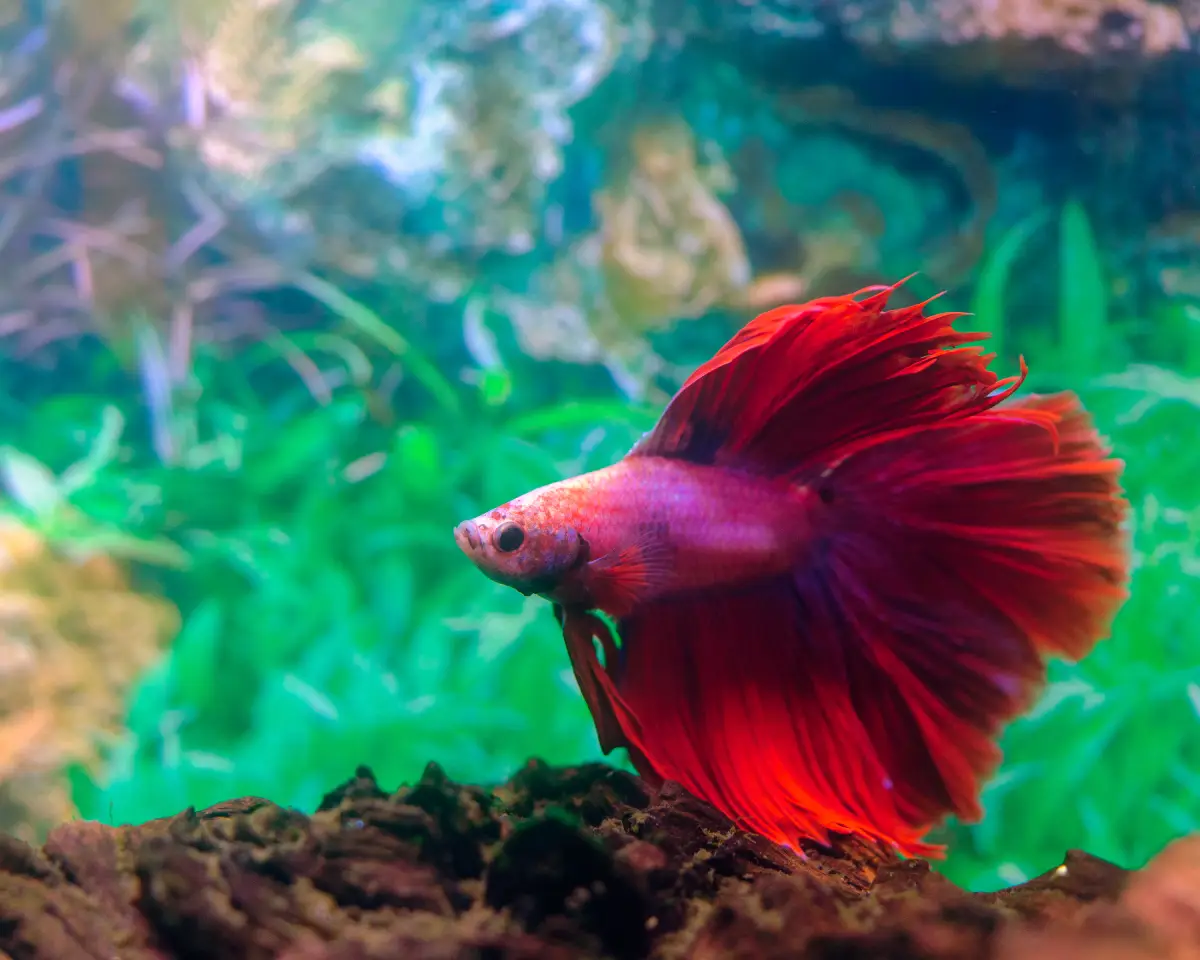
Betta fish, also known as Siamese fighting fish, are a top pick for beginners. They are hardy and require minimal maintenance. Their striking colors and flowing fins make them an attractive choice. They thrive in small tanks or bowls, which is perfect for those new to aquariums. With their ease of care and eye-catching appearance, Betta fish are an excellent option for novice aquarists.
2. Guppies
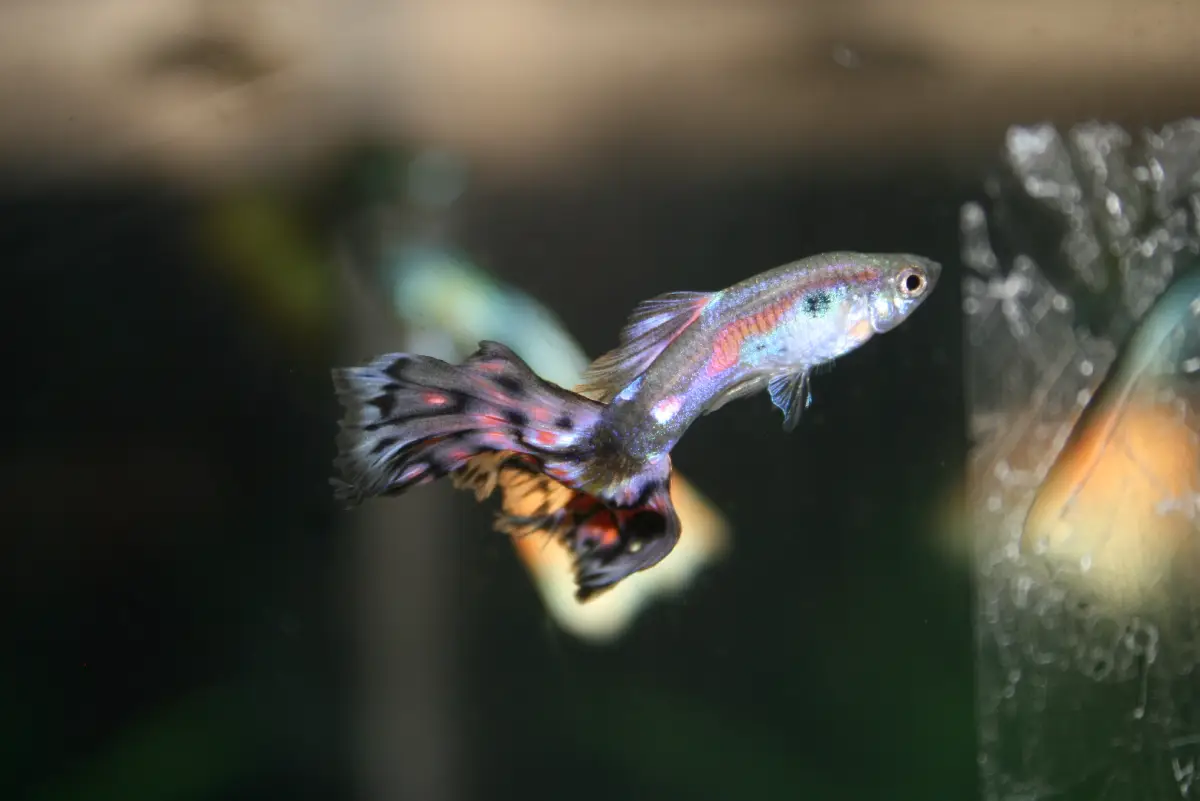
Guppies, often called “millionfish,” are a fantastic choice for beginners. These tiny, vibrant fish are not only easy to care for but also a joy to watch. Their popularity is attributed to their vivid colors and playful nature. Guppies can adapt to different water conditions and thrive in a variety of setups, making them an excellent option for beginners looking to kickstart a lively and dynamic community tank.
3. Tetras

Tetras, including popular species like Neon Tetras, are an ideal choice for beginners. These small, schooling fish exhibit stunning and vibrant colors. They are known for their peaceful nature and are perfect for novice aquarists. Neon Tetras, in particular, are recognized for their striking iridescent blue and red hues. Thriving in schools, they add a beautiful and captivating display to your tank, making them a great pick for beginners who wish to enjoy the delight of keeping a schooling fish species.
4. Swordtails
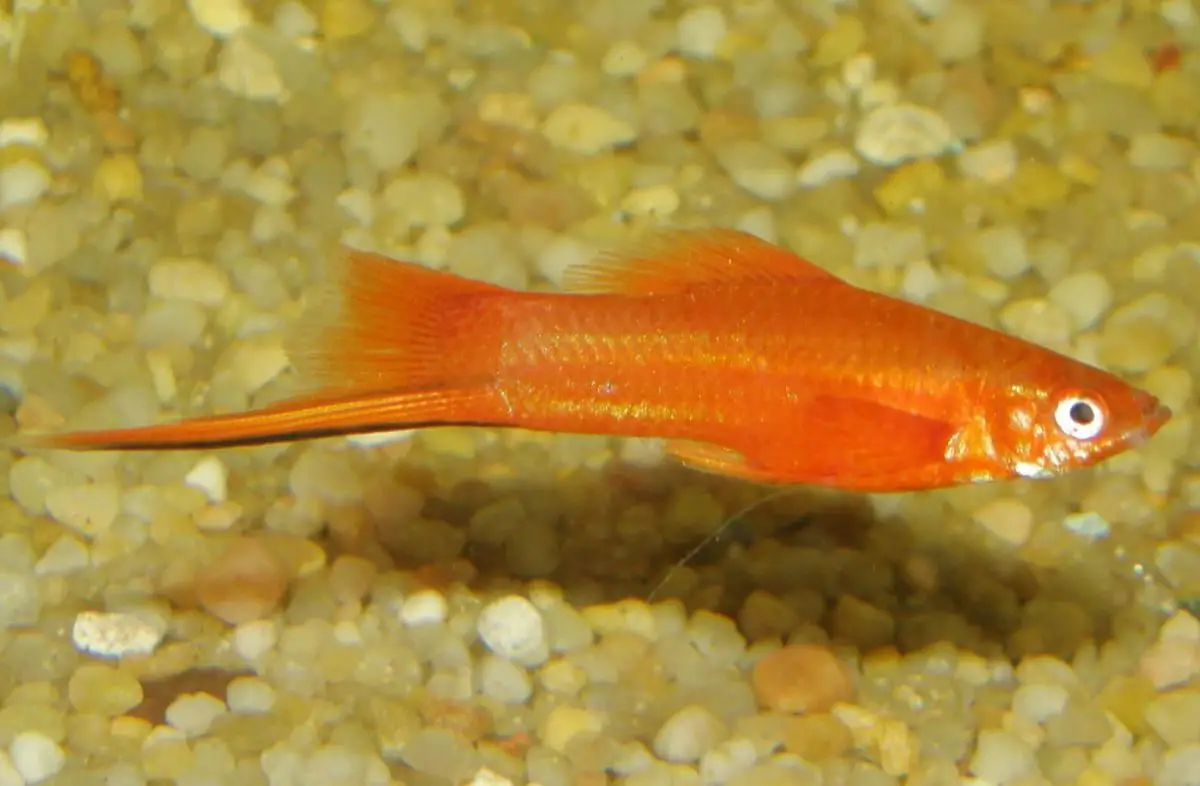
Swordtails are lively and visually appealing additions to any aquarium. Their unique appearance, with a distinct “sword” extension on the male’s tail, makes them stand out. These fish are known for their versatility and adaptability, thriving in various water conditions. Swordtails are not too demanding, which makes them a great choice for beginners seeking an eye-catching and low-maintenance species to enrich their aquatic environment.
5. Platies

Platies are highly regarded as fantastic community fish, making them a top choice for beginners. These peaceful and colorful fish are not only easy to care for but also incredibly adaptable. Platies do not fuss about water parameters and can tolerate a wide range of conditions, providing flexibility for new aquarists. If you’re a beginner seeking a lively and attractive addition to your aquarium, Platies are an ideal selection, enhancing your tank’s vibrancy and harmony.
6. Corydoras Catfish
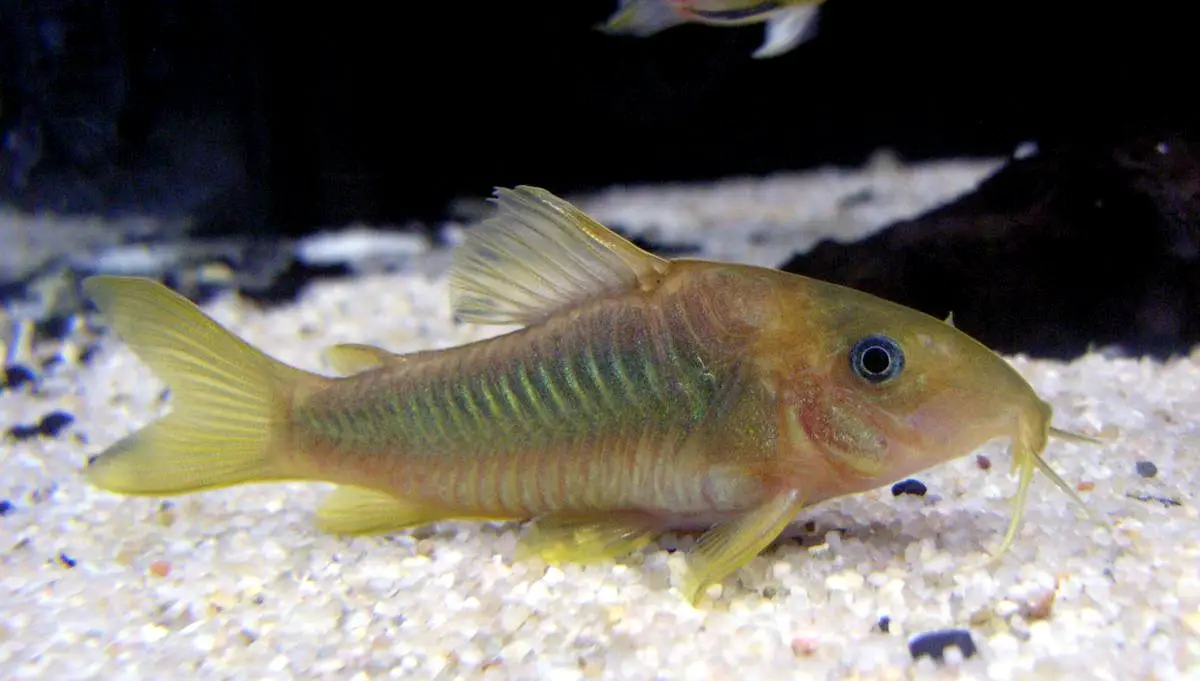
Corydoras catfish are the unsung heroes of aquariums, particularly for beginners who value a clean and harmonious tank. These hardworking bottom-dwellers are instrumental in keeping your tank pristine. They are not only diligent but also peaceful and social fish. Their compatibility with a variety of tank mates adds to their appeal, making them perfect for new aquarists looking to maintain a clean and harmonious aquarium.
7. Danios
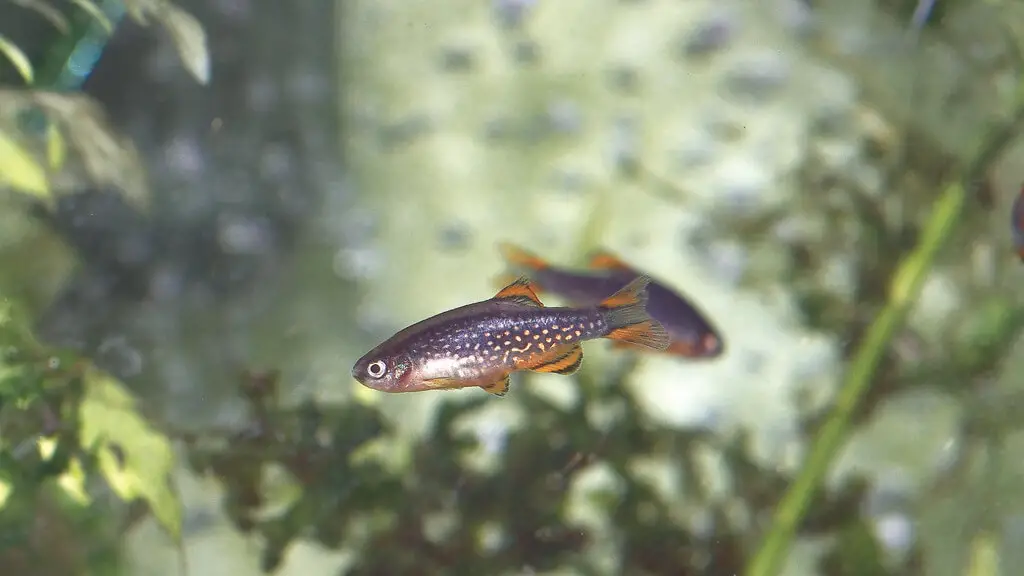
Danios are known for their dynamic and lively nature, making them a delightful addition to your aquarium. These active fish are not only visually appealing but can also coexist harmoniously with other species. They are easy to care for, which is excellent for beginners seeking a low-maintenance and energetic fish species to infuse life into their tank.
8. White Cloud Mountain Minnows
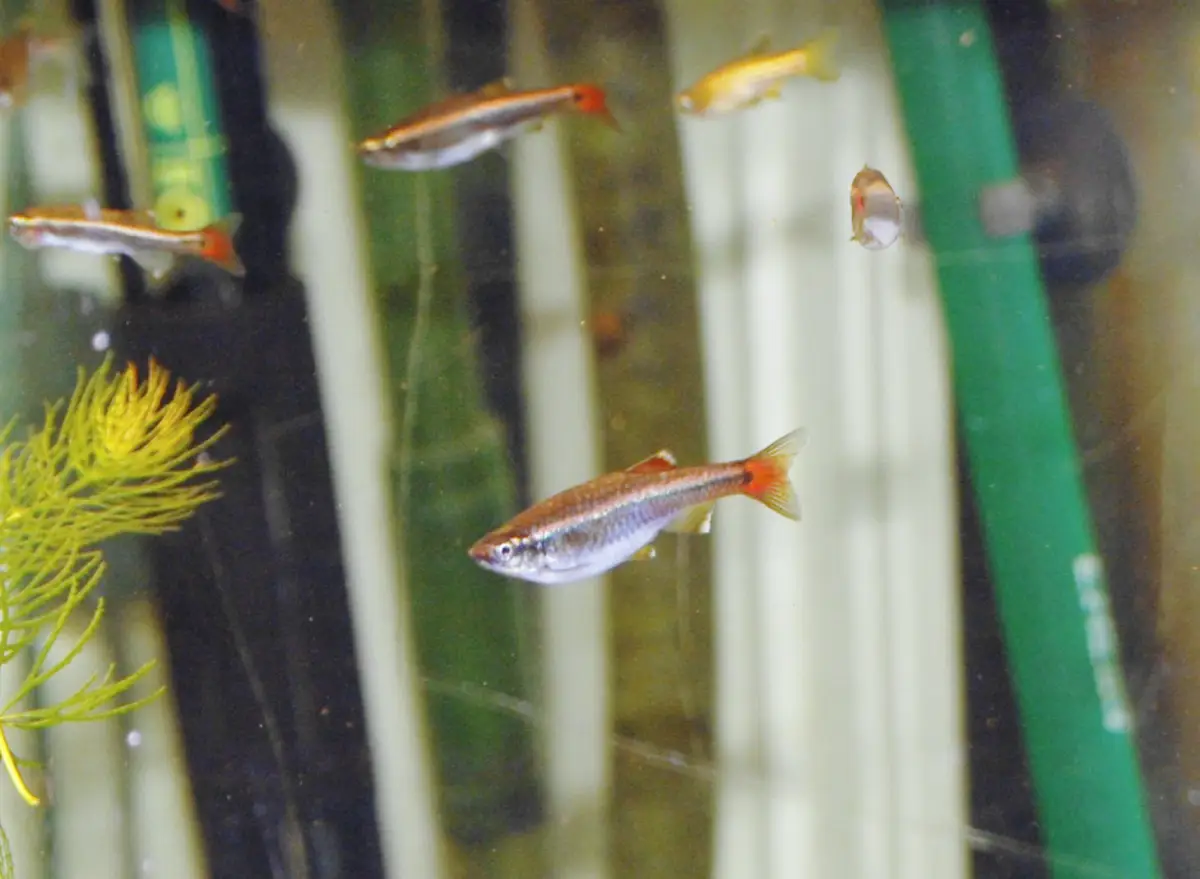
White Cloud Mountain Minnows are a perfect match for beginners, known for their small size and resilience. These hardy fish can even withstand cooler water temperatures, which sets them apart. They’re incredibly forgiving and easy to care for, making them an excellent choice for those new to aquariums. If you have a smaller setup and an interest in coldwater fish, White Cloud Mountain Minnows are a superb option, adding a touch of simplicity and grace to your aquatic world.
Frequently Asked Questions (FAQs)
Here are some of the frequently asked questions from beginners which is related to a new tank setup, they are as follows:
How Much Space Do I Need For A Fish Tank?
The size of the fish tank you need will depend on the type and number of fish you plan to keep. Generally, you should have one gallon of water per inch of fish. So, if you want to keep a 10-inch fish, you’ll need at least a 10-gallon tank. Larger fish and more fish will require larger tanks to ensure they have enough space to swim and survive.
How Much Will It Cost To Set Up And Maintain A Fish Tank?
The cost of setting up and maintaining a fish tank will depend on various factors, such as the size of the tank, the type and number of fish, the equipment needed, and ongoing maintenance costs. On average, setting up a fish tank can range from 100$ to 1000$, while ongoing costs like food and water treatment will add up over time. Proper maintenance and research can minimize these costs.
What Is The Ideal Temperature For My Fish Tank?
The ideal temperature for your fish tank will depend on the type of fish you have. Tropical fish, for example, typically require a water temperature between 75-80°F (24-27°C), while coldwater fish may prefer temperatures closer to 68°F (20°C). It is important to research the specific needs of your fish and adjust the temperature accordingly using a reliable thermometer.
Conclusion
Setting up a fish tank for beginners involves selecting an appropriate tank size, choosing a suitable location away from direct sunlight, and using the right equipment. Clean the tank and substrate thoroughly, then install filters, pumps, heaters, and lights properly. Add water, treat it accordingly, and decorate the tank with natural-looking elements. Cycle the tank to establish beneficial bacteria and introduce fish gradually. Regular maintenance is vital, including monitoring water parameters, performing water changes, and cleaning the tank.
You are just a beginner, so it is best to seek guidance from experienced fishkeepers and reliable resources for a successful fishkeeping experience. Mistakes are a part of learning, so don’t be discouraged if you encounter challenges. With patience, dedication, and a willingness to learn, you’ll soon create a perfect aquarium.
This article has provided valuable information on how to set up a new fish tank as a beginner. Stay in touch and expand your knowledge to provide the best care for your fish. Feel free to reach out if you have any further questions or need assistance.





